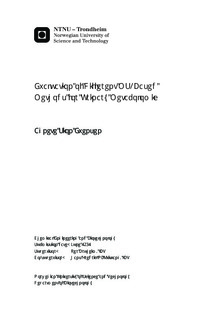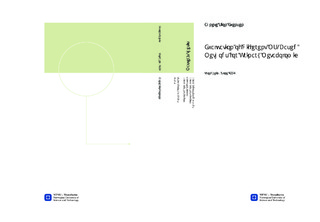| dc.contributor.advisor | Bruheim, Per | nb_NO |
| dc.contributor.advisor | Kvitvang, Hans Fredrik N. | nb_NO |
| dc.contributor.author | Evensen, Agnete Sion | nb_NO |
| dc.date.accessioned | 2014-12-19T13:15:06Z | |
| dc.date.available | 2014-12-19T13:15:06Z | |
| dc.date.created | 2012-11-10 | nb_NO |
| dc.date.issued | 2012 | nb_NO |
| dc.identifier | 567002 | nb_NO |
| dc.identifier | ntnudaim:7383 | nb_NO |
| dc.identifier.uri | http://hdl.handle.net/11250/245895 | |
| dc.description.abstract | The diagnosis of chronic kidney disease (CKD) by examination of the urine has the potential to improve patients outcome by means of earlier detection. Due to the fact that the urine contains metabolic signatures for many biochemical pathways, this biofluid is ideal for metabolomics. A feature unique to diseases of the kidney is that the components of the kidney excrete urine. On the basis of this, analysis of urine have great potential for discovering new biomarkers for renal failure. The aim of this study was therefore to compare urine samples obtained from CKD patients with healthy volunteers, in order to observe differences in metabolite concentration. Four different methods were applied for metabolite analysis. The three first methods used targeted analysis with gas chromatography coupled with single and triple quadrupole mass spectrometry and two different derivatization techniques were evaluated, alkylation and silylation respectively. The fourth method used untargeted analysis with hydrophilic interaction liquid chromatography coupled to a time-of-flight mass spectrometer. The combination of these techniques covers a large part of the urine metabolome by enabling detection of amino- and nonamino acids, sugars, sugar alcohols, purines, pyrimidines etc. The first method identified 36 amino- and nonamino acids in the in-house library as well as finding one unidentified compound present in the samples. The second method identified 59 metabolites using silyaltion as derivatization techniques and identified metabolites which are not amino- and nonamino acids, hypoxanthane and uracil respectively. The third method identified 46 amino- and nonamino acid with absolute quantification. The fourth method using mass profiler professional for feature selection algorithm found 6 accurate masses higher represented in the CKD group, however later it was found that these masses were present in both groups. The results from this study showed differences in metabolite concentration between the CKD group and the control group, where the excretion of almost all components into urine was decreased for the chronic kidney disease subjects. However, some compounds such as benzoate and proline were observed to be at higher concentration. Finally, the results were comparable with previous studies as well as observing metabolite variations between the two groups. However, there is still a long way to go before this can be applied in clinical settings. Future work needs to be performed on a larger group where the patients are with same diagnosis and off medications. | nb_NO |
| dc.language | eng | nb_NO |
| dc.publisher | Institutt for bioteknologi | nb_NO |
| dc.subject | ntnudaim:7383 | no_NO |
| dc.subject | MTKJ Industriell kjemi og bioteknologi | no_NO |
| dc.subject | Bioteknologi | no_NO |
| dc.title | Evaluation of Different MS-Based Methods for Urinary Metabolomic | nb_NO |
| dc.type | Master thesis | nb_NO |
| dc.source.pagenumber | 113 | nb_NO |
| dc.contributor.department | Norges teknisk-naturvitenskapelige universitet, Fakultet for naturvitenskap og teknologi, Institutt for bioteknologi | nb_NO |

